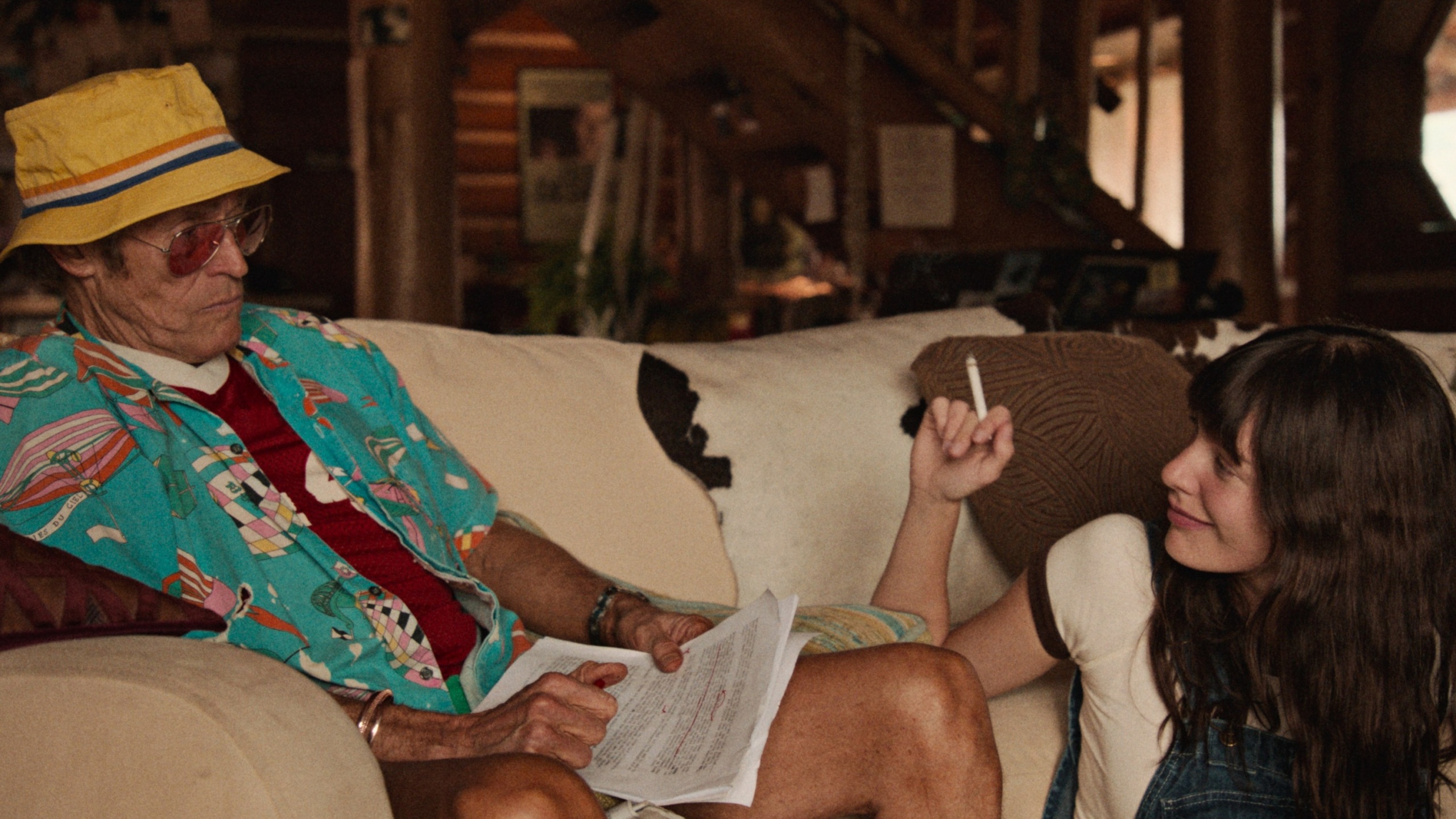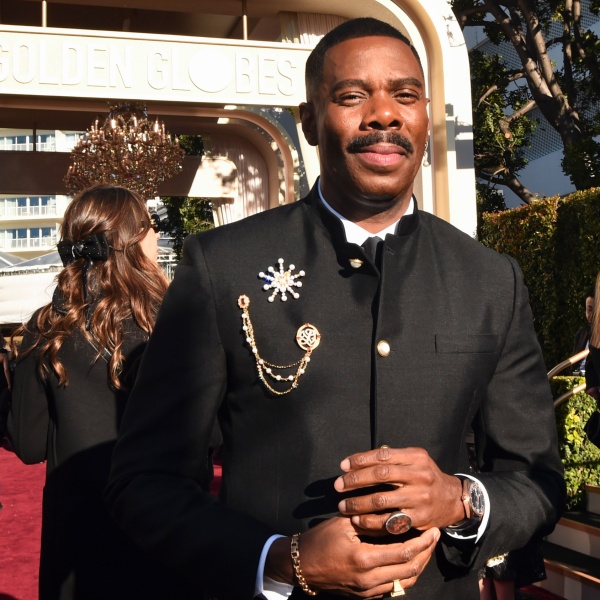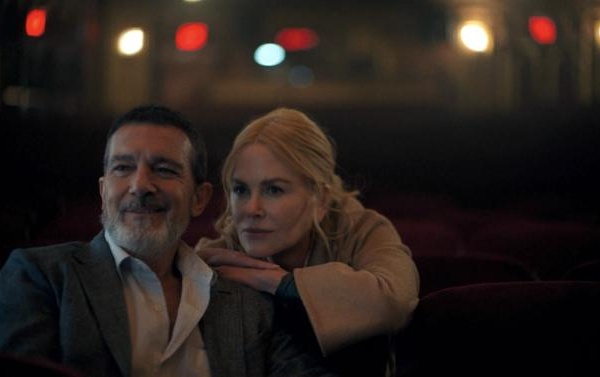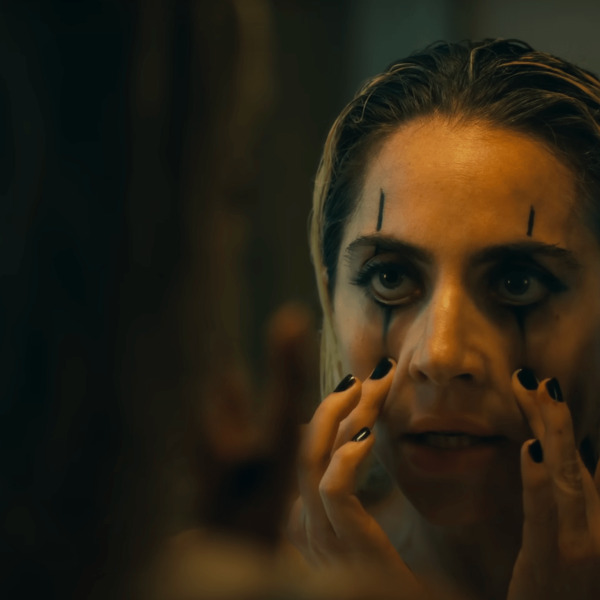
Updated: Just hours after this article was first posted, MGM+ announced it had acquired Alex Gibney’s “In Restless Dreams: The Music of Paul Simon” and will air as a two-part docuseries on March 17 and March 24, 2024 at 9 p.m. EDT/PDT.
It’s not too late to pick up a thoughtful gift for the people in your life, and that includes film distributors. While much of Hollywood is shutting down in advance of the holidays, plenty of cinema-loving elves are still toiling away in hopes of seeing their (very deserving) films land underneath the metaphorical tree.
And there are plenty of gifts to share, because even as the distribution landscape continues to shift and shape with startling regularity, some of the year’s most interesting and unique cinematic efforts are still looking for a home (at least, in America; this list only covers films still looking for domestic distribution, some may have homes elsewhere). In fact, we’ve got 18 of them wrapped and ready to go.
This holiday season, won’t you consider giving a home to these standout films? These titles include awards contenders, festival standouts, and proven winners, readymade for an ambitious streamer or an up-and-coming boutique label.
Anne Thompson, Christian Blauvelt, Ryan Lattanzio, Marcus Jones, Brian Welk, Robert Daniels, and Eric Kohn also contributed to this article.
“Bad Behaviour”
We’ll dispatch with the sadly necessary disclaimer: first-time feature filmmaker Alice Englert is, as the Internet would love for us all to repeatedly yell about for mostly boring ends, a “nepo baby.” The daughter of Oscar-winning filmmaker Jane Campion and fellow director Colin Englert (and, hell, let’s do the full family tree: also the granddaughter of actress Edith Campion and theater director Richard Campion), Englert has long dedicated herself to her own artistic career. She’s an actress, writer, singer, and songwriter, and with her Sundance premiere “Bad Behaviour,” she ascended to feature filmmaker status (she’s got two short films under her belt already).
Perhaps it’s the talent in her genes, perhaps it’s her unique life experience, perhaps some combo of that and more, but Englert is already a formidable, fully formed filmmaker. Dumb labels be damned: She’s the real deal, and “Bad Behaviour” is proof positive of that.
Not just a banger of a first film, “Bad Behaviour” also boasts an incredible performance from Jennifer Connelly, who plays Englert’s character’s mother, a former child star who goes a little crazy. A savvy distributor would do well for themselves to a) get on board the Englert train early and b) pick up a film that might just have awards legs for Connelly in the coming months. A two-for-one, and more! —KE
“Close Your Eyes”
Victor Erice has only made four feature-length films since his career began with the beloved 1973 classic “The Spirit of the Beehive,” and so you’d assume that his first movie since 1992 would spark a ton of interest from specialty distributors, particularly after it premiered to glowing reviews out of Cannes. But “Close Your Eyes” — a sedate but ultimately shattering 169-minute drama about the unsolved disappearance of a famous actor, and his favorite director’s search to find him — is still looking for someone to claim it for the American market.
Perhaps that’s because the film’s aforementioned Cannes premiere was ignominiously shunted out of Competition because the 83-year-old Erice couldn’t make the trip to France, or perhaps distributors are (understandably) wary of shelling out for an elegiac slow-burn that mourns what the movie business has become while offering no obvious hook beyond its basic greatness. Whatever the case, this is a major work from a true master of Spanish cinema, it played to hushed reverence at the NYFF press screening I attended, and its reputation will only continue to grow as more festival audiences begin to see it. Any distributor would be smart to swoop in and put its imprint on this modern classic, but I’d be particularly ecstatic if Sideshow swooped in to give the film its due and tee it up for an eventual spot in the Criterion Collection. —DE
“Copa ‘71”
As far as opening scenes go, it is hard to think of one that gets a film’s message across as well at this TIFF premiere starting with Brandi Chastain, icon of women’s soccer who played in the inaugural 1991 FIFA Women’s World Cup, being handed an iPad showing another women’s soccer match played two decades earlier, with the reveal that there was a whole other women’s world cup she didn’t even know about. One that happens to be the most widely attended women’s sporting event of all time.
As standard a sports documentary as the Venus and Serena Williams executive produced “Copa ‘71” is, the film is an infuriating, yet enjoyable corrective that reminds audiences that there are so many historic firsts erased by time. Even past the documentary itself, there is so much potential for the archival footage of the unofficial 1971 Women’s World Cup that directors Rachel Ramsay and James Erskine unearth, clarifying to a new generation that women’s sports has a longer, arduous, glorious history than widely realized. —MJ
“5 Seasons of a Revolution”
Documentarian Lina doesn’t reveal her full name in “5 Seasons of a Revolution,” and similarly obscures the identities of her colleagues, for good reason: The movie chronicles the efforts of these secretive Syrian journalists as they attempt to follow the destructive effects of the country’s Civil War. Employing deepfake technology to cover their identities, the subjects of the documentary map out their strategies for pushing past the propaganda and covering civil unrest despite the life-threatening challenges at hand.
An intimate microcosm of Syria’s tragic downfall, “5 Seasons of a Revolution” should excite buyers eager for awards-friendly documentaries about timely matters; likewise, anyone keen on learning more about the human cost of the Syrian war will find much to glean from this absorbing half-decade chronicle. —EK

“Flipside”
“Flipside,” an endearing, dizzying documentary about the crushing convergence between art and commerce, begins with a common cold open. What we presume to be our enigmatic subject, the late legendary jazz photographer Herman Leonard, offers us a few pearls of wisdom that have led to his success. An array of close-ups of the singular, black and white portraits he took of Duke Ellington, Frank Sinatra, and Nat King Cole, from a retrospective exhibition of his work, further instills his importance to an unknowing audience. These are also Leonard’s final days. He’s dying from cancer. From the opening, we think “Flipside” will be a “great man you must know more about” story.
But this documentary isn’t about the jazz photographer. At least, not directly. There are other stories: A woman writer battling writer’s block, “This American Life” creator Ira Glass’ musical, and the documentary’s primary inspiration, a tiny record store in Pompton Lakes, New Jersey, called Flipside Records. These are all unrealized ideas director Chris Wilcha once had for documentaries. But over the years, by way of life’s curves, commercial jobs, and the shockingly fleet passage of time — none of them have come to fruition. This film picks up those loose ends, combining them into a single picture of how artists must often set aside their dreams for stability, and the regrets and joys that follow such decisions. —RD
“Gonzo Girl”
The year is 1992. But in the high-spirited (and often just plain high) atmosphere of Hunter S. Thompson’s — sorry, “Walker Reade’s” — Colorado compound, it is perpetually 1975. And young Alley Russo (a luminous, deeply feeling Camila Morrone) is about to travel back in time. But will she be able to come back?
Alley’s story, the heart of Patricia Arquette’s energetic feature directorial debut (which premiered at TIFF earlier this year), is nothing new. Hell, it’s not even new to her. Based on Cheryl Della Pietra’s memoir of the same name — and here adapted by writers Jessica Caldwell and Rebecca Thomas (who previously wrote and directed “Electrick Children,” which shares plenty of DNA with “Gonzo Girl”) — Arquette’s film addresses that very idea, that there are always going to be eager, bright young women willing to work themselves to the bone in hopes of it pushing into the next echelon of life. Many of them will work for famous men to do that. Plenty of them even did exactly what Della Pietra did: work for the mercurial founder of gonzo journalism himself, Hunter S. Thompson (here, refashioned as “Walker Reade,” with Willem Dafoe aces at HST drag).
Morrone has frequently turned in exciting performances, from indie film (“Never Goin’ Back,” “Mickey and the Bear”) to prestige TV (“Daisy Jones & the Six”), but Arquette’s film is the best example yet of her insane star power and wild magnetism. Any distro looking to capitalize on her rising fame would do well to buy the film ASAP. —KE
“Holly”
Belgian director Fien Troch’s “Holly” feels like if Gus Van Sant directed “Carrie,” however an enigmatic and bloodless upside-twist on Stephen King’s iconic tale this Venice competition premiere is. The ritual humiliations of girlhood play out through the eyes of the title character, played by Cathalina Geeraerts, a high-school outcast bullied by most of her peers with no friends beyond her sister (Maya Louisa Sterkendries) and platonic-seeming, possibly neurodivergent boyfriend Bart (Felix Heremans). But Holly one day has a premonition that tells her not to go to school, she calls out sick, and next thing you know, the school building is burning down. Nine months later, an in memoriam mural indicates that at least 10 students died in the fire. Now, Holly is seen by her classmates as a kind of folk hero not only because of her preordained knowledge of events but also because her powers now extend beyond predicting the future and to talking to the dead (including the fire’s victims) and healing the sick, wounded, infertile, and heartbroken through touch.
“Close” cinematographer Frank van den Eeden films “Holly” in a (what else but, these days) boxy ratio that, containing this particular coming-of-age stories, recalls Van Sant’s “Paranoid Park” and even “Elephant” in its lush treatment of high school traumas. Composer Johnny Jewel leans heavily into his “Twin Peaks” era with a synthified score that feels ominous and melodramatic at the same time (just as Angelo Badalamenti’s work did for David Lynch’s series). Troch’s features have never found a proper home in the U.S., and while “Holly” may prove a shade too elliptical for some (a lot of unfinished business is left on the table, which just means more to haunt you with) but this eerie coming-of-age drama could drum up interest on the arthouse or niche streaming end of spectrum. (Belgium already picked its Oscar entry, rapper Baloji’s “Omen.”) —RL

“Hollywoodgate”
A feature-length documentary about the Taliban will never scream “commercial appeal.” But “Hollywoodgate,” if handled properly by a smart distro, could emerge as a top contender for the Best Documentary Feature Oscar. As an act of journalistic daring, it’s hard to beat: Berlin-based Egyptian reporter Ibrahim Nash’at was granted access to embed in the Taliban’s inner circle for an entire year following their takeover of Afghanistan once again in 2021. “If his intentions are bad, he will die soon,” one Taliban leader says of the filmmaker.
It’s obviously an example of access journalism, but in the best possible way: Much of what we see is what the Taliban wants us to see, but as that’s what’s really important to them, it’s also what we — anyone who’s a non-fundamentalist — need to see to understand them. One Talib gives a metaphor for why they want women to wear a burqa. Throw two pieces of chocolate on the ground, he says, one has a wrapper on it, the other doesn’t. Which one do you want to eat? Vile as that is, this is absolutely what this Talib wants to convey to Nash’at. And that’s the highest outcome that can emerge from access journalism: That what the subjects tell us is what we desperately need to know. —CB
“Justice”
There are a number of challenges to releasing “Justice” right now: The biggest is that Doug Liman is not finished with making it and is reviewing whether to incorporate additional elements based on tips he’s received since it was announced that the Brett Kavanaugh expose doc would screen at Sundance. It only screened one time at the festival, and was a secret until the day before – with every person involved with the project having signed NDAs — so that Kavanaugh could not seek an injunction to prevent the film from screening at all. Of course, he had to be aware of its existence to some degree as Liman and his filmmaking team did reach out to him for comment about the film’s interviewees’ allegations against him.
All of this, though, could make a distributor wary. Instead, they should look at how this is an extremely tightly told story (84 minutes, before whatever new material is added) told with the thriller verve that Liman brought to “The Bourne Identity.” It also has a built-in audience: the millions of Americans resentful about Kavanaugh being on the court and the rushed confirmation process that had him seated in the first place. That built-in audience also means “Justice” will preach to the choir, and it’s not hard to imagine “Justice” will ultimately go to, say, MSNBC, as the documentary about President Obama’s photographer, “The Way I See It,” did after a limited release from Focus Features in 2020. But if it goes to MSNBC, it may also do well on affiliated platform Peacock. —CB
“Les Indesirables”
French filmmaker Ladj Ly scored a surprise Oscar nomination with his debut, “Les Misérables”; with his second drama, another nom is not out of the question, but the film is still in need of a domestic distributor. Ly’s 2019 debut feature, “Les Misérables,” took 15 years to make but received kudos in France and scored a 2020 Oscar nomination. Ly received multiple offers to direct Hollywood films, but chose to return to France and make “Les Indésirables,” which Ly initially called “Bâtiment 5” after the grubby high-rise tenement — now razed — where he grew up outside Paris.
From the start, Ly ratchets the tension with the residents’ tamped-down anger. The film’s opening, in which six men carry a coffin down six flights of stairs, is torturous to watch and sets up the living conditions the characters endure. The director recreated his “Les Misérables” filmmaking team and fashioned another fictional screenplay (with Giordano Gederlini) based on true events. This time, Ly had a bigger budget, but his methods didn’t change. He wants to keeps the energy going during filming as much as possible. For the major set piece that showed the evacuation of the high rise, Ly shot for three weeks with as many as 150-200 extras, three cameras, and a crane amid the narrow spaces of the flats and the stairs. —AT

“Lee”
Making her feature directorial debut, cinematographer and documentary Oscar nominee (“The Betrayal”) Ellen Kuras directs Oscar-winner Kate Winslet (“The Reader”) in this biopic of British model-turned-war photographer Lee Miller, who covered World War II for Vogue magazine. Liz Hannah, John Collee and Marion Hume adapted the book “The Lives of Lee Miller” by Antony Penrose, who is played by Josh O’Connor in the film.
The film boasts a starry, well-respected supporting cast, including Marion Cotillard, Alexander Skarsgård, Andrea Riseborough, and Andy Samberg. And Kuras assembled a top-level crew to match: Oscar-winning composer Alexandre Desplat (“The Grand Budapest Hotel” and “The Shape of Water”), Oscar-winning costume designer Michael O’Connor (“The Duchess”), Oscar-nominated cinematographer Paweł Edelman (“The Pianist”) and BAFTA-winner Ivana Primorac (“The Darkest Hour”) as head makeup and hair artist. For distress in need of a “prestige” title to take them through awards season, “Lee” is a very smart buy indeed. —AT
“Lil Nas X: Long Live Montero”
Historically, the world has not been quick to embrace Black queer artists. Even the TIFF premiere of “Lil Nas X: Long Live Montero” faced a bomb threat. But the film itself, directed by Carlos López Estrada and Zac Manuel, surpasses the standard cinematic concert experience to show how the young rapper has already changed lives for the better during his so far brief time in the spotlight.
That is not to say his performances of hits like “Call Me by Your Name,” “Industry Baby,” and the record-breaking “Old Town Road” don’t have the theater jumping, but it also feels meaningful to see the way in which Nas’ family has come to accept him, and be inspired to live in their own truths. And the way the artist talks about things trying to hold him down, like protestors at his Boston show, ends up leading to some genuinely comedic lines, as the film also reminds viewers that Lil Nas X isn’t just a promising pop star, but a master troll. —MJ
“Mountains”
Monica Sorelle’s touching feature debut “Mountains” centers on a Haitian family eking out a life in Miami amid encroaching gentrification and an unstable housing market. Working-class demolition worker Xavier (Atibon Nazaire) wants a bigger, even suburban (i.e. whiter) house for his family, which includes his seamstress wife Esperance (Sheila Anozier) and even their disappointing, college-dropout son Junior (Chris Renois). By day, Xavier helps knock down the very houses that the forces of gentrification are paving over, making him complicit in the bureaucratic machine that’s increasingly squeezing out the immigrants likes of Xavier and his family.
Haitian-American filmmaker Sorelle patiently observes their days and ways, while Esperance works as a crossing guard and Junior works as a parking lot attendant but has aspirations of becoming a stand-up comic. Everybody is dreaming of something bigger, and far out of the shadow of the tragic circumstances from which they’ve emigrated. “Mountains” is a patient, subtle movie that doesn’t imbue its telling with grand tragedy or ill-fated vicissitudes; rather, it basks in the loveliness of the life this family lives with a neorealist touch. Haitian-American cinema rarely gets a spotlight outside of festivals in the United States. “Mountains” is an accessible and well-considered feature that could enhance its more-than-worthy profile with the right arthouse distributor. —RL
“Parachute”
Brittany Snow’s directorial debut “Parachute” is an honest, funny, romantic, and personal look at eating disorders, self-loathing, and coming-of-age. That it manages to pack such an emotional wallop and thoughtful look at difficult topics in an entertaining package — complete with Dave Bautista operating a shitty murder mystery dinner theater joint — is an even bigger surprise.
“Yellowjackets” actress Courtney Eaton is put through the wringer, both mentally and physically, as Riley, a young woman just out of rehab and now attending therapy to contend with her own body issues and other insecurities. Her chemistry and friendship with love interest Ethan (Thomas Mann) is the highlight, but Snow continues peeling back layers and personal demons that elevate “Parachute” beyond simple melodrama. The film examines how this co-dependent bond helps her on the road to recovery. It’s a shock that some streamer hasn’t seen the cast that also includes Joel McHale, Kid Cudi, Lukas Gage, and Gina Rodriguez and decided to give it a shot. —BW

“In Restless Dreams: The Music of Paul Simon”
Paul Simon wanted a documentary. He was a fan of Alex Gibney’s 2015 “Sinatra: All or Nothing at All” and asked the Oscar-winner (“Taxi to the Dark Side”) to consider devoting a documentary to him on the occasion of recording his 15th album, “Seven Psalms” (Owl Records and Legacy Recordings, 2023). The result is “In Restless Dreams: The Music of Paul Simon,” which had its world premiere as an all-rights sales title at the Toronto International Film Festival.
The doc has a running time of three-and-a-half hours, which it sustains, thanks to Simon’s extraordinary, still-robust body of work that’s familiar to generations of fans. The Simon and Garfunkel story is fascinating — some may forget that a remixed “The Sound of Silence” rescued their early career, and that the duo who parted acrimoniously reunited briefly for a concert tour after their hugely successful 1981 Central Park Concert. The marvel of Gibney’s movie is the intimate, off-the-cuff material in the recording studios. Often, the sound engineer puts up pre-recorded tracks and Simon sings along for camera, working out the songs and playing with odd instruments like the chromelodeon. The movie reveals a more fragile side of Simon, who turns 82 this year, and a smart distributor or streamer could use the doc (which could easily be cut into two “episodes”) to remind audiences of his iconic role in the annals of American music. —AT
“Solo”
Mainstream film has so far failed to reflect what a global phenomenon drag has become in wake of the reality competition “RuPaul’s Drag Race.” Though “Solo,” winner of the Best Canadian Feature Film Award at TIFF this year has nary a mention of the TV show, its success is in part how well it immerses viewers into Montreal’s gay nightlife scenes. Moments where lead Simon (Théodore Pellerin) performs rousing lip syncs of hits like ABBA’s “Voulez Vous” in a full face of makeup and willowy blond wig feel hypnotic.
In daylight, the film becomes a more standard relationship drama, with Simon pulled apart by a distant mother, and a new romance that turns pernicious, but at night the film comes alive. Though the Canadian films padding each year’s TIFF lineup can tend to lack mainstream vibes, the Sophie Dupuis-directed “Solo” seems to have legs as an unabashedly queer film with global appeal. —MJ
“Tehachapi”
Because his Oscar-nominated documentary “Faces Places” so charmingly puts co-director and subject Agnès Varda at the forefront, JR’s talent as a filmmaker feels underrated. However, in his new film “Tehachapi,” the French artist once again holds the frame with his charisma, yet wades into political waters even he did not expect to traverse. The title comes from a town in the California desert housing a supermax prison that gives JR the greenlight to cover its yard in his trademark paper and paste portraiture. A select group of inmates become part of the process, helping create and be subject of an interactive art project with ramifications that result in incremental prison reform.
“Tehachapi” is a healing journey that one can only hope finds a platform to bring its message of hope to more than just film festival attendees. So rarely do we get to see outreach result in measurable change, and it is all the more special how spontaneous JR comes upon it, now being a project he still works on in between showcasing this film about it. —MJ







